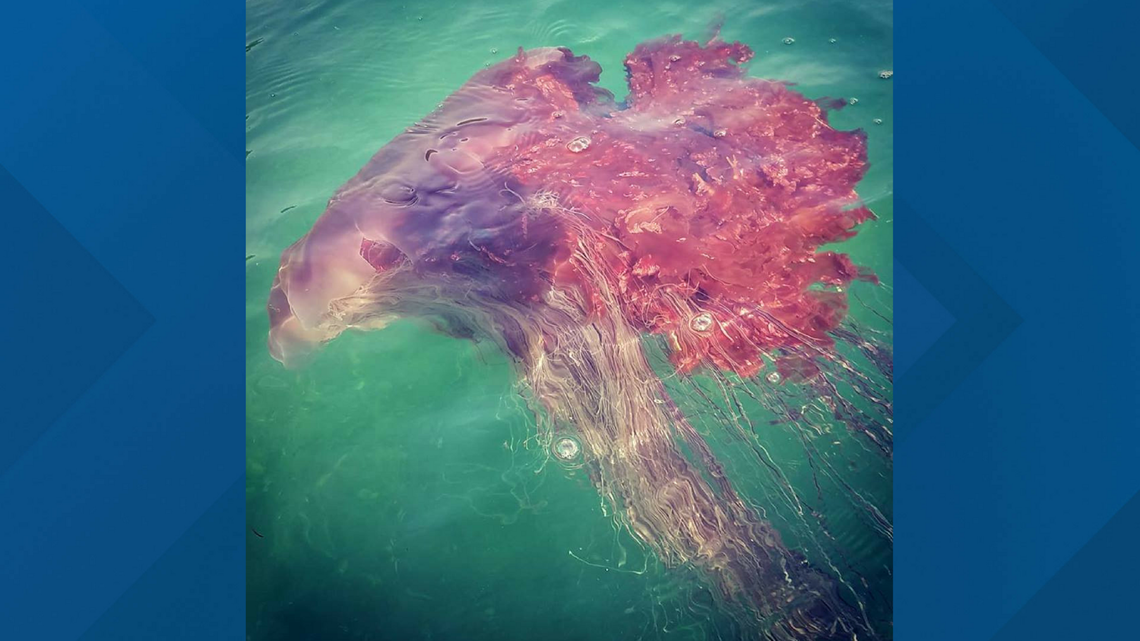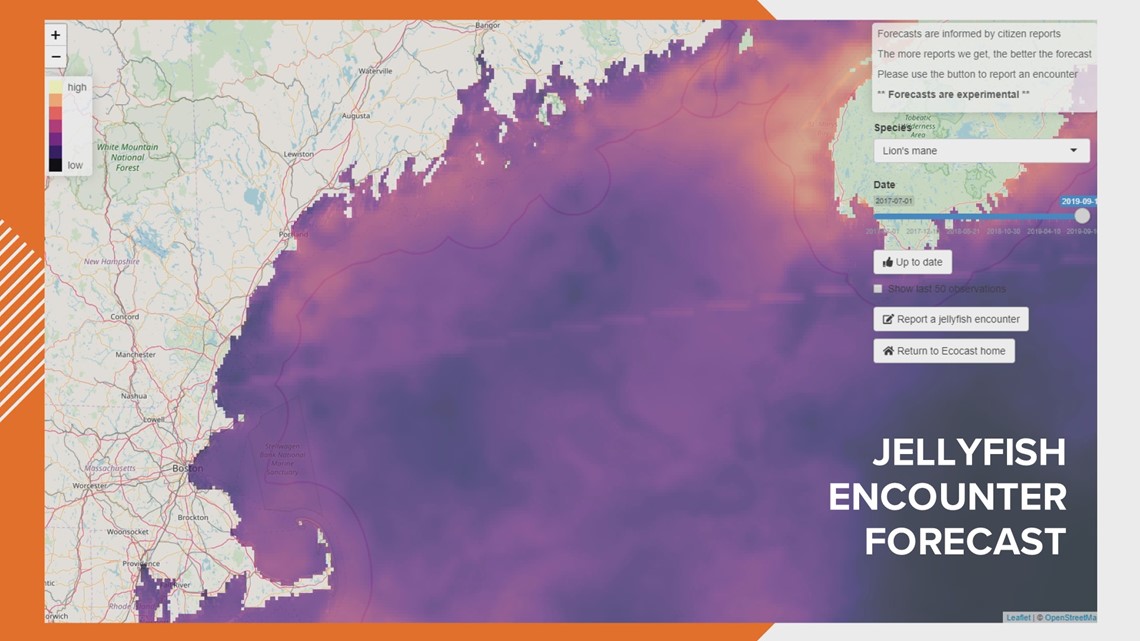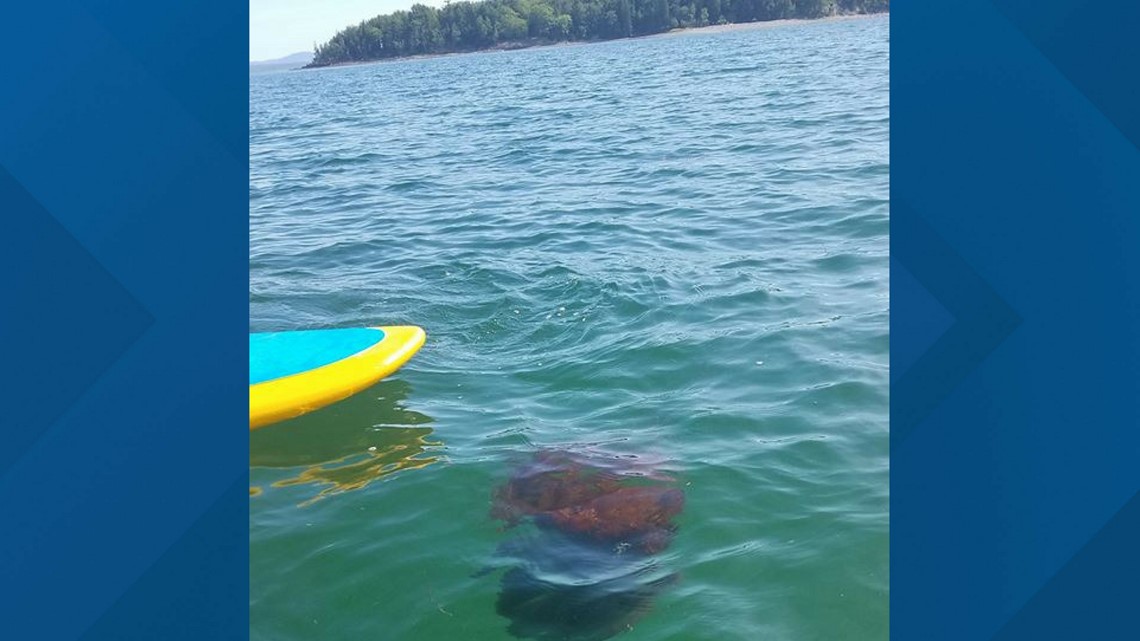PORTLAND, Maine — By now, you may have seen the stunning images of lion's mane jellyfish in the water and on Maine's coastline.
This summer, the most striking aspect has been the size of them.
Jellyfish are tracked each summer by Nick Record, a senior research scientist at Bigelow Laboratory for Ocean Sciences in East Boothbay.
"This year has been a little bit different. We have seen almost entirely lion's mane jellies with very few reports of anything else, and people often tell me how big they are or send photos," Record said.


Over the last few years, he's developed a way to predict the chance of encountering a lion's mane and other jellies in the Gulf of Maine.
"My dream is just like we have weather forecasts, we can get forecasts for all kinds of things in the environment," Record's work is part of an ecosystem forecasting program, known as the Ecocaster.
The "jellyfish encounter forecast" incorporates actual sightings, weather and environmental factors including the wind direction, ocean currents and water temperature to predict the chance of seeing one.


The more citizen reports, the better the forecast, Record says.
You can check out the forecast here.


If you see jellyfish, you are encouraged to submit a report to Bigelow Lab, and use the hashtag #MaineJellies on social media.

